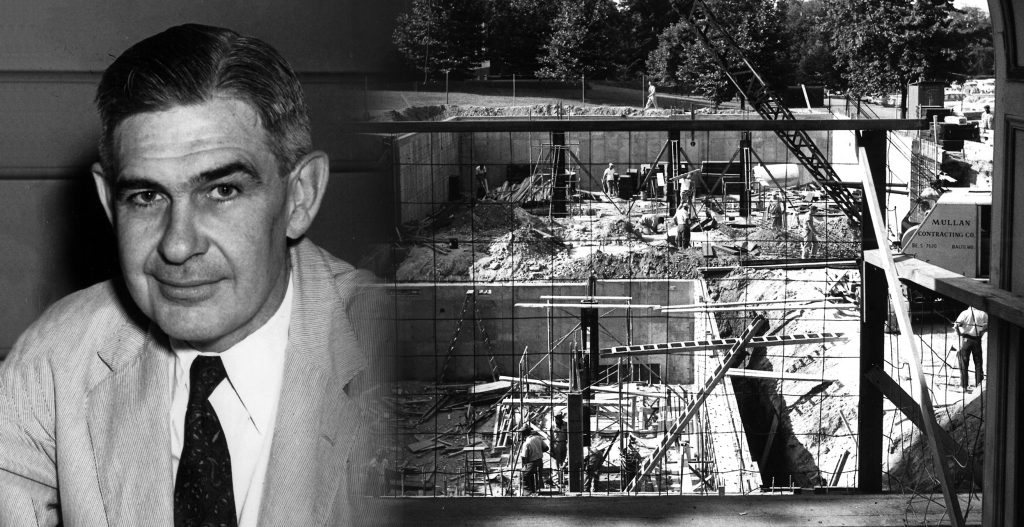
Robert H. Roy, Dean, 1953-1973
Scientific knowledge—not technical skill —is what engineers need to tackle modern challenges and meet new developments with creativity and innovation.
Such was the fervent belief of Robert H. “Rob” Roy ’28, who became the school’s third dean in 1953. As an undergraduate at Johns Hopkins, Roy had bristled at the School of Engineering’s highly prescribed, technically oriented curriculum. As an administrator, he sought to broaden the options. Describing himself as “favorably included toward integration,” Roy helped establish the Polytechnic High School’s “A” Course pipeline to Johns Hopkins, and paved the way for black students to be admitted to the course before it was legally required.
Roy’s tenure as dean came during a period when Americans were becoming increasingly enamored with science and its wonders. Enthusiasm for engineering ebbed as the country became caught up in the Space Race and the Cold War. Against this backdrop, the School of Engineering changed its name in 1961 to the School of Engineering Sciences.
Even bigger change was in store. In 1966, Roy supported an initiative to merge the School of Engineering Sciences with the Faculty of Philosophy to create the Johns Hopkins School of Arts and Sciences. Roy believed the merger had the potential to help unify the previously separated faculty.
The change in direction captured the attention of the Alfred P. Sloan and Ford foundations. In the mid-1960s, the School of Engineering gained 10-year grant commitments from these two organizations —totaling nearly $2.2 million—to fund salaries, graduate fellowships, renovations, and equipment.
The new arrangement appeared to work initially. But over time, the dismantled School of Engineering lost faculty, departments, and its sense of identity, to the dismay of many remaining faculty and alumni.
Roy continued as dean of Engineering Sciences until his retirement in 1973. Both before and after retirement, he was active beyond the dean’s office. He consulted as an industrial labor arbitrator, served on several state and federal advisory panels, and published more than 40 works.
Roy died in 2000 at the age of 93, but not before writing a memoir. In it, he noted that he deeply appreciated the friendships he formed at Johns Hopkins, and the lessons he learned. Among them: “…academia is not an ivory tower but a society of humans beset by frailties from which we all suffer.”
The affable Rob Roy was known both on and off campus as a true gentleman, always available to help. “He was the ‘Good Shepherd,’ the guy who took the responsibility, took charge, and followed through. He was constantly shepherding his students and being there in a supportive role.”
— Charles Flagle ’40, PhD ’55, Roy’s former student, colleague, and close friend for nearly 50 years.




